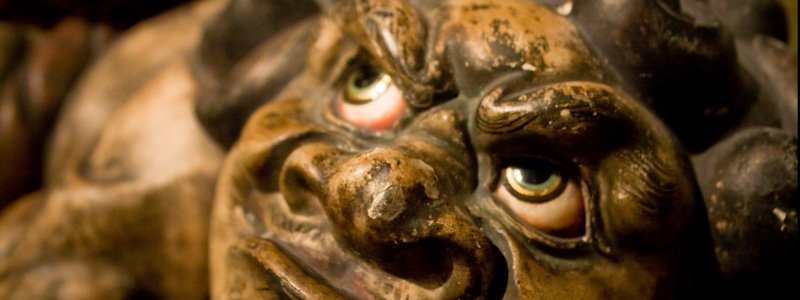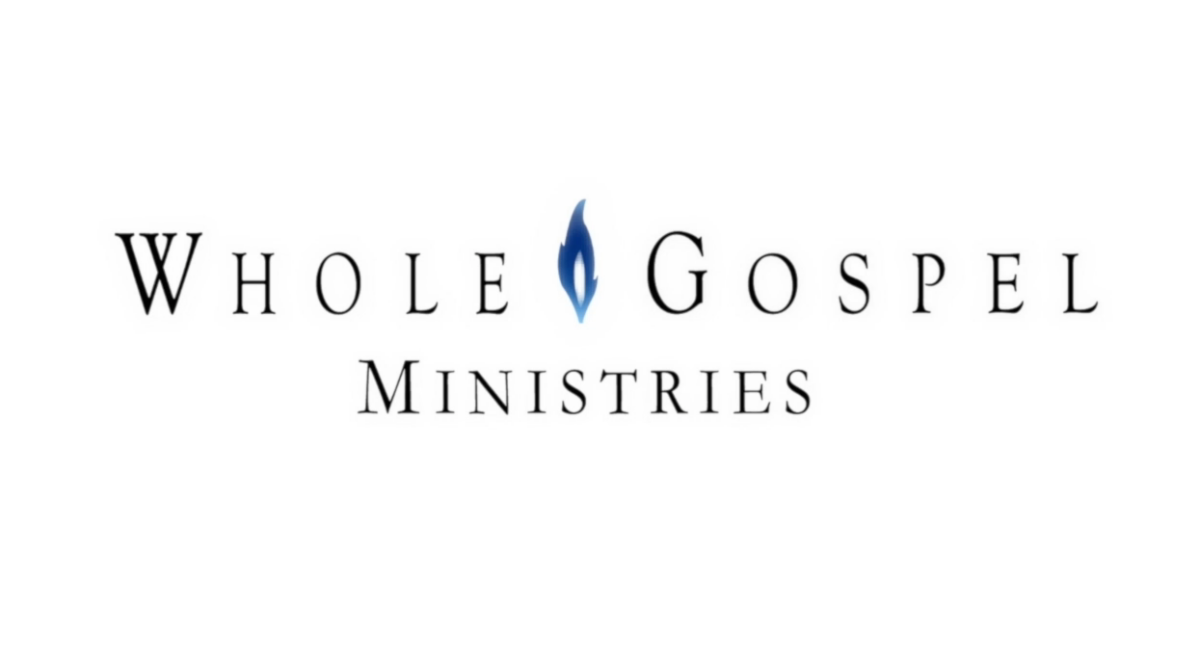
“But what is the ‘image to the beast’? and how is it to be formed? The image is made by the two-horned beast, and is an image to the beast. It is also called an image of the beast.
“Then to learn what the image is like and how it is to be formed we must study the characteristics of the beast itself—the papacy.
“When the early church became corrupted by departing from the simplicity of the gospel and accepting heathen rites and customs, she lost the Spirit and the power of God; and in order to control the consciences of the people, she sought the support of the secular power. The result was the papacy, a church that controlled the power of the state and employed it to further her own ends, especially for the punishment of ‘heresy.’
“In order for the United States to form an image of the beast, the religious power must so control the civil government that the authority of the state will also be employed by the church to accomplish her own ends.
“Whenever the church has obtained secular power, she has employed it to punish dissent from her doctrines. Protestant churches that have followed in the steps of Rome [such as the Anglican Church, etc.] by forming alliance with worldly powers have manifested a similar desire to restrict liberty of conscience.
“An example of this is given in the long-continued persecution of dissenters by the Church of England [Anglican]. During the sixteenth and seventeenth centuries, thousands of nonconformist ministers were force to flee from their churches, and many, both of pastors and people, were subjected to fine, imprisonment, torture, and martyrdom.
“It was apostasy that led the early church to seek the aid of the civil government, and this prepared the way for the development of the papacy—the beast. Said Paul: ‘There’ shall ‘come a falling away, . . . . and that man of sin be revealed.’ 2 Thessalonians 2: 3. So apostasy in the [Christian] church will prepare the way for the image to the beast.
“The Bible declares that before the coming of the Lord there will exist a state of religious declension similar to that of in the first centuries. ‘In the last days perilous times shall come. For men shall be lovers of their own selves, covetous, boasters, proud, blasphemers, disobedient to parents, unthankful, unholy, without natural affection, truce breakers, false accusers, incontinent, fierce, despisers of those that are good, traitors, heady, high-minded, lovers of pleasures more than lovers of God; having a form of godliness, but denying the power thereof.’ 2 Timothy 3: 1-5. ‘Now the Spirit speaketh expressly, that in the latter times some shall depart from the faith, giving heed to seducing spirits, and doctrines of devils.’ 1 Timothy 4: 1.
“Satan will work ‘with all power and signs and lying wonders, and with all deceivableness of unrighteousness.’ And ‘all that receive not the love of the truth, that they might be saved,’ will be left to accept ‘strong delusion, that they should believe a lie.’ 2 Thessalonians 2: 9-11.
“When this state of ungodliness shall be reached, the same results will follow as in the first centuries.
“The wide diversity of belief in the Protestant churches is regarded by many as decisive proof that no effort to secure a forced uniformity can ever be made. But there has been for years [this edition written in 1911], in the churches of the Protestant faith, a strong and growing sentiment in favor of a union based upon common points of doctrine. To secure such a union, the discussion of subjects upon which all were not agreed—however important they might be from a Bible standpoint—must necessarily be waived.
“Charles Beecher, in a sermon in the year 1846, declared that the ministry of ‘the evangelical Protestant denominations’ is not only formed the way up under a tremendous pressure of merely human fear, but they live, and move, and breathe in a state of things radically corrupt, and appealing every hour to every baser element of their nature to hush up the truth, and bow the knee to the power of apostasy. Was not this the way things went with Rome? Are we not living her life over again? And what do we see just ahead? Another general council! A world’s convention! Evangelical alliance, and universal creed!’ – Sermon on ‘The Bible as Sufficient Creed,’ delivered at Fort Wayne, Indiana, Feb. 22, 1846. When this shall be gained, then, in the effort to secure complete uniformity, it will be only a step to the resort of force.
“When the leading churches of the United States, uniting upon such points of doctrine as are held by them in common, shall influence the state to enforce their decrees and to sustain their institutions, then Protestant America will have formed an image of the Roman hierarchy, and the infliction of civil penalties upon dissenters will inevitably result.
“The beast with two horns ‘causeth [commands] all, both small and great, rich and poor, free and bond, to receive a mark in their right hand, or in the foreheads: and that no man might buy or sell, save he that had the mark, or the name of the beast, or the number of his name.’ Revelation 13: 16, 17.
“ The third angel’s warning is: ‘If any man worship the beast and his image, and receive his mark in his forehead, or in his hand, the same shall drink of the wine of the wrath of God.’ ‘The beast’ mentioned in this message, whose worship is enforced by the two-horned beast, is the first, or leopard-like beast of Revelation 13—the Papacy. The ‘image of the beast’ represents that form of apostate Protestantism which will be developed when the Protestant churches shall seek the aid of the civil power for the enforcement of their dogmas. The ‘mark of the beast’ still remains to be defined.
“After the warning against the worship of the beast and his image the prophecy declares: ‘Here are they that keep the commandments of God, and the faith of Jesus.’ Since those who keep the commandments of God are thus placed in contrast with those who worship the beast and his image and receive his mark, it follows that the keeping of God’s law, on the hand, and its violation, on the other, will make the distinction between the worshipper of God and the worshipper of the beast [the papacy].
“The special characteristics of the beast, and therefore his image, is the breaking of the commandments of God. Says Daniel, of the little horn, the Papacy: ‘He shall think to change times and law.’ Daniel 7: 25, R.V. And Paul styled the same power the ‘man of sin,’ who was to exalt himself above God. One prophecy [of Daniel] is a complement of the other [of John]. Only by changing God’s law could the Papacy exalt itself above God; whoever should understandingly keep the law as thus changed would be giving supreme honor [homage] to that power by which the change was made. Such an act of obedience of papal laws would be a mark of allegiance to the pope in the place of God.
“The Papacy has attempted to change the law of God. The second commandment, forbidding image worship, has been dropped from the law, and the fourth commandment has been so changed as to authorize the observance of the first instead of the seventh day as the Sabbath.
“But papists urge, as a reason for omitting the second commandment, that it is unnecessary, being included in the first, and that they are giving the law exactly as God designed it to be understood. This cannot be the change foretold by the prophet. An intentional, deliberate change is presented: ‘He shall think to change the times and the law.’ The change in the fourth commandment exactly fulfills the prophecy. For this the only authority claimed is that of the church. Here the papal power openly sets itself above God.
“While the worshippers of God will be especially distinguished by their regard for the fourth commandment,—since this is the sign of His creative power and the witness to His claim upon man’s reverence and homage,—the worshippers of the beast will be distinguished by their efforts to tear down the Creator’s memorial, to exalt the institution of Rome. It was in behalf of the Sunday that popery first asserted its arrogant claims (see Appendix); and its first resort to the power of the state was to compel the observance of Sunday as ‘the Lord’s day.’ But the Bible points to the seventh day, and not to the first, as the Lord’s day. Said Christ: ‘The Son of man is the Lord also of the Sabbath.’ The fourth commandment declares: ‘The seventh day is the Sabbath of the Lord.’ And by the prophet Isaiah the Lord designates it: ‘My holy day.’ Mark 2: 28; Isaiah 58: 13.
“The claim so often put forth that Christ changed the Sabbath is disproved by His own words. In His Sermon on the Mount He said: ‘Think not that I am come to destroy the law, or the prophets: I am not come to destroy, but to fulfill. For verily I say unto you, Till heaven and earth pass, one jot or on tittle shall in no wise pass from the law, till all be fulfilled. Whosoever therefore shall break one of these least commandments, and shall teach men so, he shall be called the least in the kingdom of heaven: but whosoever shall do and teach them, the same shall be called great in the kingdom of heaven.’ Matthew 5: 17-19.
“It is a fact generally admitted by Protestants that the Scriptures give no authority for the change of the Sabbath. This is plainly stated in publications issued by the American Tract Society and the American Sunday School Union. One of these works acknowledges ‘the complete silence of the New Testament so far as any explicit command for the Sabbath [Sunday, the first day of the week] or definite rules for its observance are concerned.’ —George Elliott, The Abiding Sabbath, page 184.
“Another says: ‘Up to the time of Christ’s death, no change has been made in the day;’ and, ‘so far as the record shows, they [the apostles] did not. . . .give explicit command enjoining the abandonment of the seventh-day Sabbath, and its observance on the first day of the week.’— A.E. Waffle, The Lord’s Day, pages 186-188.
“Roman Catholics acknowledge that the change of the Sabbath was made by their church, and declare that Protestants by observing the Sunday are recognizing her power. In the Catholic Catechism of Christian Religion, in answer to a question as to the day to be observed in obedience to the fourth commandment, this statement is made: ‘During the old law, Saturday was the day sanctified; but the church, instructed by Jesus Christ [when, where, how?], has substituted Sunday for Saturday; so now we sanctify the first, not the seventh day. Sunday means, and now is, the day of the Lord.’
“As the sign of the authority of the [Roman] Catholic Church, papist writers cite ‘the very act of changing the Sabbath into Sunday, which Protestants allow of; . . . . because by keeping of Sunday, the acknowledge the church’s power to ordain feasts, and to command them under sin.’ —Henry Tuberville, An Abridgement of the Christian Doctrine, page 58.

